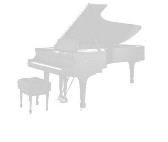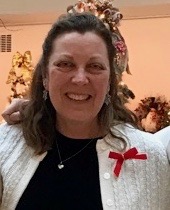
Music by Members - Dec 14, 2017
Member Program featuring Susanne Shrader, Carolyn Bernstein, Michelle Duffy, Bridget Gilchrist, and Adrienne Milics.
PROGRAM
A Selection of Christmas Carols
Silent Night Franz Xaver Gruber (1787-1863)
Joseph Mohr (1792-1848), lyrics; arr. by Ernie & Becky Brock
Angels' Medley Traditional; arr. by Ernie & Becky Brock
Romance, Op. 37 Camille Saint-Saëns (1835–1921)
Bridget Gilchrist, flute
Linda MacGougan, piano
***
Trio for Flute, Clarinet (or Viola) and Harp (or Piano) Elizabeth Poston (1905-1987)
Movement 2 (Molto moderato)
Movement 4 (Vivace scherzando)
Bridget Gilchrist, flute
Carolyn Bernstein, clarinet
Linda MacGougan, piano
Elizabeth Poston was an English composer, pianist and writer who edited and collected folk songs. She studied at the Royal Academy of Music in London, first creating a name for herself at the age of 20 with the publication of seven songs, including the popular "Sweet Suffolk Owl" (1925 for voice and piano). During WW ll she worked for the BBC, becoming Director of Music for European Service Broadcasting. She was the subject of E.M. Forster's Howard's End and wrote the score for the 1970 film adaptation.
“Elisabeth Poston (1905-1987) was a British composer and musician, who studied at the Royal Academy of Music and later worked for both the BBC and the Arts Council. She is best remembered for her setting of the Christmas carol Jesus Christ the Apple Tree, which is still performed regularly today.
The Harp Trio was commissioned in 1958 by Anthony Friese-Greene, to whom it is dedicated. He was secretary of the Hampton Music Club, where it was first performed as part of a private concert. This beautiful work is one of her more substantial compositions, comprising four contrasting movements. Originally scored for Flute, Clarinet, and Harp, it can be performed with a Viola instead of the Clarinet and/or a Piano instead of the Harp.”—quote from Musicroom.com
The trio is in four contrasting movements: the second is poignantly beautiful and the last has a strong rhythmic drive, with a puckish sense of humor.
***
Plöner Musiktag Paul Hindemith (1895-1963)
Zwei Duette fur Violine und Klarinette
1. Lebhaft
2. Mässig bewegt
Susanne Shrader, violin
Carolyn Bernstein, clarinet
Paul Hindemith was a prolific German composer, violist, violinist, teacher and conductor. He was one of the principal German composers of the first half of the 20th century and a leading musical theorist who sought to revitalize tonality, which was being challenged by the introduction of Schoenberg's 12-tone music. His early music was considered anti-Romantic and iconoclastic.
“On June 20, 1932, Hindemith spent the day at a school in Plön, a small town between Hamburg and Kiel. The school specialized in music, and he had written a series of pieces for the students to learn and play. Thus: A Day of Music at Plön. The day opened with Morning Music, a complex set for brass instruments. Much of the day was spent rehearsing individuals and ensembles. For a boy who could play only the xylophone, Hindemith wrote a part, on the spot; for three boys who couldn’t play any instrument, he wrote recorder trios and had them trained to play the instrument. During breaks between courses of midday dinner, the orchestral Table Music was played. In the afternoon, a cantata (“Admonition to Youth to Apply Themselves to Music”) for two soloists, three choruses, and orchestra which urges children to learn music was sung, spoken (a melodrama), and played. Hindemith was renowned for his sense of humor; the cantata is supposedly mostly tongue in cheek, but any wit therein doesn’t translate--the texts seem deadly serious, almost boarding-school punitive in attitude. The Evening Concert, a 35-minute series of orchestral, ensemble, and instrumental works, closed the day.
The point of it all was performing, not creating music for the ages to be heard by the general public or even the Serious Record Collector. So there seems little point in evaluating the music (by what standards?) or the performances (measured against whom?). While parts of Table Music have a light touch, most of the Plön music is in Hindemith’s heavy, neobaroque style of the early 1930s. “—Quote from Arkivmusic.com
***
Serenade in D Major, Op. 25 Ludwig van Beethoven (1770-1827)
I. Entrada. Allegro
This work is one of the Trios für Streichinstrumente and was originally scored for flute, violin, and viola. (Here the flute is substituted by the violin ). It is a very unusual arrangement, one of the only in the literature. From Jon Palmer (allmusic.com): By Mozart's time, “the term 'serenade' was not necessarily associated with a piece played in the evening and directed toward a lover. Serenades were still, however, pieces written for particular occasions and often performed outdoors… In Vienna it became common to compose such works for very small ensembles… The forces, however, are reduced and the structure of the work is much smaller in scale… [Beethoven's] opening Allegro is marked "Entrada," traditionally indicating that the music is intended to accompany the entrance of an important person. Beethoven's use of Spanish term is more a nod toward the past than it is indicative of any practical use for the piece. A binary structure with a brief coda, the Allegro's numerous repeats are typical of both dance music and the pièce d'occasion.”
Trio "Le Londres” Eugène Ysaÿe (1858-1931)
2. Allegretto poco Lento – Poco vivo scherzando
Lisa Kugelman, violin
Virginia Allen, violin
Susanne Shrader, viola
This is the only trio for two violins and viola composed by Eugène Ysaÿe. The trio was unpublished at the time Eugène Ysaÿe died in 1931. It was composed from ca. 1914--1916, and was given its premiere performances in London in 1916. The trio was revised between 1916 and 1926. The revisions were done in stages and were related to different performances of the work from 1916 and 1925. The initial title was Trio Pour Deux Violons et Alto. The publisher nicknamed it "Le Londres." It premiered in London in 1916.
Eugène Ysaÿe was foremost a concert violinist to whom many composers dedicated their violin concerti or sonatas.
***
Rapsodie espagnole Maurice Ravel (1875-1937)
1. Prélude à la nuit
2. Malagueña
3. Habañera
Capriccio espagnol, Op. 34 Nikolay Rimsky-Korsakov (1844-1908)
5. Fandango asturiano
Michelle Duffy & Diane Day piano four-hands
Ravel’s Rapsodie espagnole was one of his first major works for orchestra, first performed in 1908. He composed a version for piano 4-hands or 2 pianos at the same time. Ravel’s mother was Basque, and his father was French. He grew up in a Basque town in France, very close to the Spanish border. Many of his pieces reflect this Spanish heritage. The final movement of the suite, Feria (marked assez animé) is the longest of the four movements, so we are concluding instead with the shorter final movement of Rimsky-Korsakov’s Capriccio espagnol.
The Capriccio espagnol was written for orchestra and had its first performance in 1887 in St. Petersburg, Russia. This suite was originally intended for solo violin, but Rimsky-Korsakov decided an orchestral work would do it better justice. Rimsky-Korsakov stated that, “It is intended as a brilliant composition for the orchestra. The change of timbres, the felicitous choice of melodic designs and figuration patterns, exactly suiting each kind of instrument, brief virtuoso cadenzas for solo instruments, etc., constitute here the very essence of the composition and not its garb or orchestration. The Spanish themes of dance character furnished me with rich material for putting in use multiform orchestral effects. All in all, the Capriccio is undoubtedly a purely external piece, but vividly brilliant for all that.”
He uses the fandango as his finale for this suite. This is a type of Andalusian dance for couples, and one of most widespread of the Spanish dances, whose music expresses the passion of the dancers.
Capriccio espangnol was arranged for piano 4-hands by the composer.
***
Popular Christmas Classics
White Christmas Irving Berlin (1888-1989)
It’s Beginning to Look a Lot Like Christmas Meredith Willson (1902-1984)
I’ll Be Home for Christmas Kim Gannon, lyrics; Walter Kent (1911-1994), music
Have Yourself a Merry Little Christmas Ralph Blane, lyrics; Hugh Martin (1914-2011), music
Adrienne Milics, mezzo-soprano
Al Kennedy, clarinet
Jean Watson Esselink, piano
BIOS
Bridget Gilchrist
